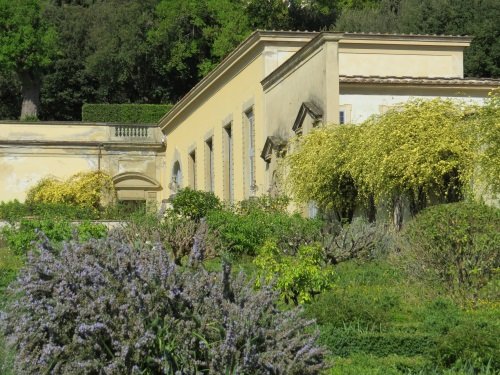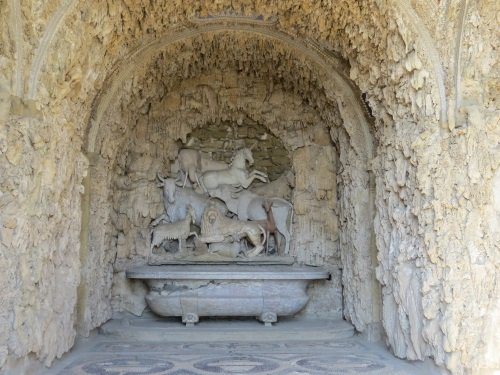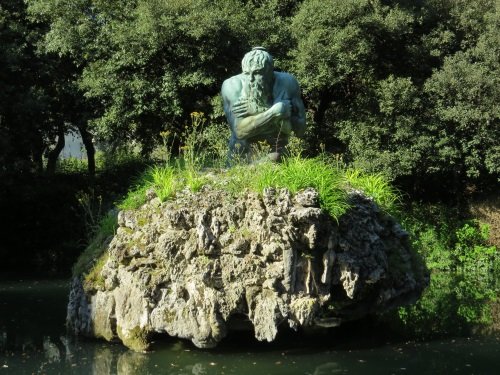The
Medici Villas and Gardens
comprise a serial nomination of 12 villas and 2 gardens in Tuscany. These are the legacy of the extensive arts patronage of the wealthy and powerful De’ Medici family. The constructions date from the 15th to 17th centuries, and reflect the contemporary trend among the Florentine wealthy to live in the countryside in harmony with nature.
While I was staying in Florence for a week on a busy schedule, I used a few free hours to get a feel for this WHS. I wanted to visit a spot accessible by public transport, not too far from the center of Florence and with positive recommendations. The
Villa de Castello
seemed to fit the bill perfectly. It lies on the outskirts of Florence (near the airport), and can be reached by a 10 minute train ride followed by a stroll of the same length.

|
The Villa di Castello was the country residence of Cosimo I de' Medici. He had lived there as a child, and decided to turn the villa into an ambitious project when he came to power as Grand Duke of Tuscany. The villa was to be adorned with masterpieces of Renaissance art, while the gardens were redesigned by adding statues, fountains and a system of aqueducts for the necessary water supply.
The country house itself is not open to the general public anymore – it is used by an Italian language institute. The gardens are free to enter though. There were only 2 other tourists around when I visited on a late Tuesday afternoon. The gardens are well-cared for, and still orange and lemon trees are grown on site just as in the original design.
The "formal" garden lies directly at the back of the villa, and is built against a natural hill. It has the common attributes that we know so well from other court gardens, nothing unmissable but certainly done with taste. The highlight for me was the
Grotto of the Animals
. It's a man-made cave embedded with stones, mosaic and seashells. Three niches hold groups of animals, ranging from wild boar to a giraffe. The display of all kinds of terrestrial, aerial and marine creatures is probably motivated by "a purely intellectual curiosity and spirit of inquiry". Cosimo als had his own zoo with exotic animals at his villa in Poggio a Caiano.

|
The creation of artificial grottoes such as this one was the result of the introduction of the Mannerist style in garden design. The Villa de Castello might be the first site where this was done, the better known grotto in the Boboli Gardens in Florence was modelled after it. The grotto used to hold a "water joke" to entertain the Duke and his visitors: by turning a key, the gate would lock guests inside the grotto and they would be soaked with water from hidden pipes. Unfortunately this is not on display anymore, you have to stay behind a fence and cannot enter the cave.
Outside the enclosed garden and even more uphill, a "forest" was created. In the WH nomination the Italians tried to market this as a precursor to the English landscape garden, but did not fool ICOMOS which dismissed the Medici as minor nobility with pretty small gardens. There's not much to see here among the trees, except for the intriguing
Fountain of Appenino
(see last photo).
In total I spent about 1.5 hours in the gardens. It's a pretty place to explore on a sunny day in Spring and an oasis compared to the Florence city center. Especially this garden of the Villa de Castello has been a large influence on Italian and French garden design, so it definitely was an educating visit too.



